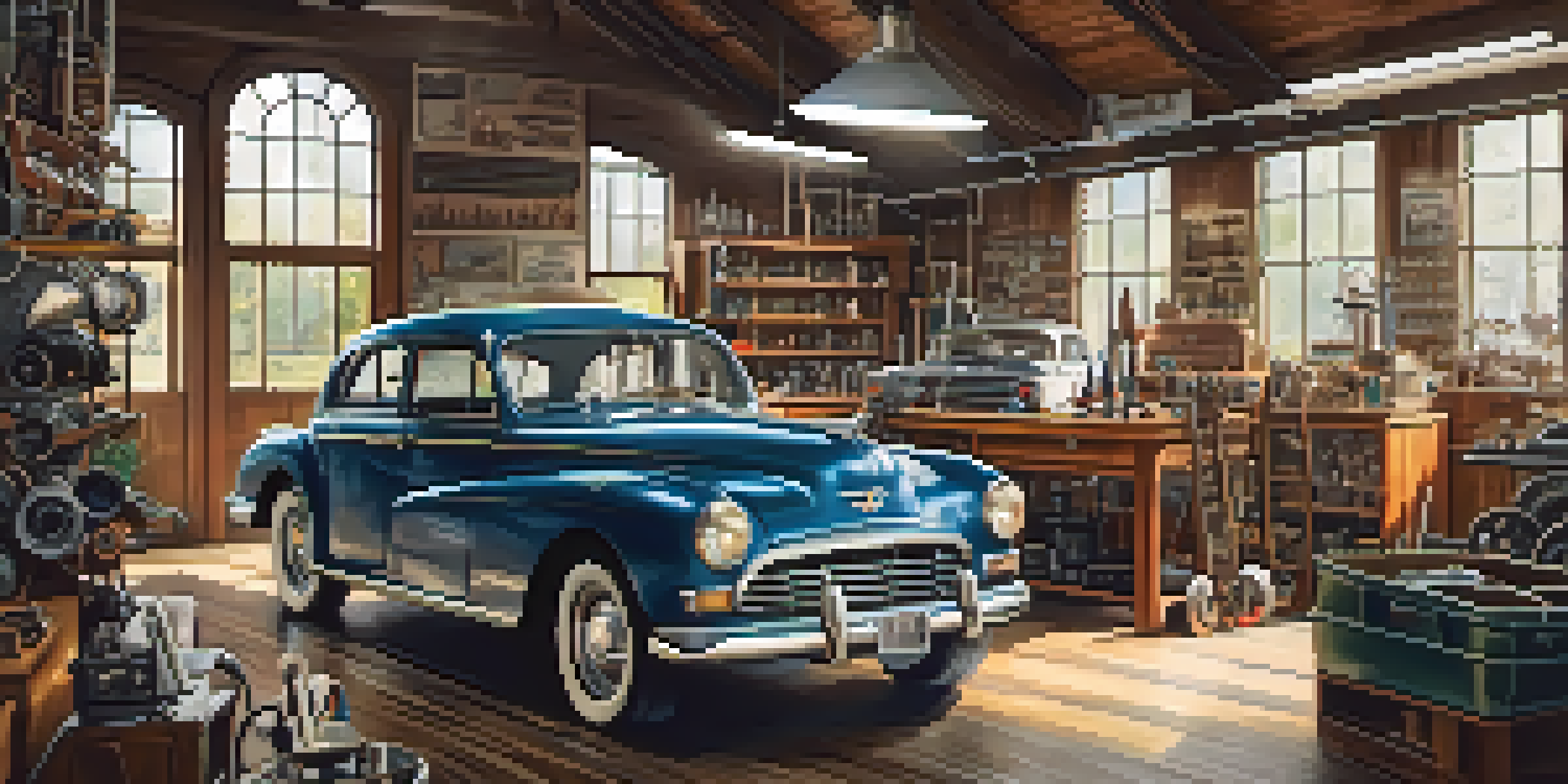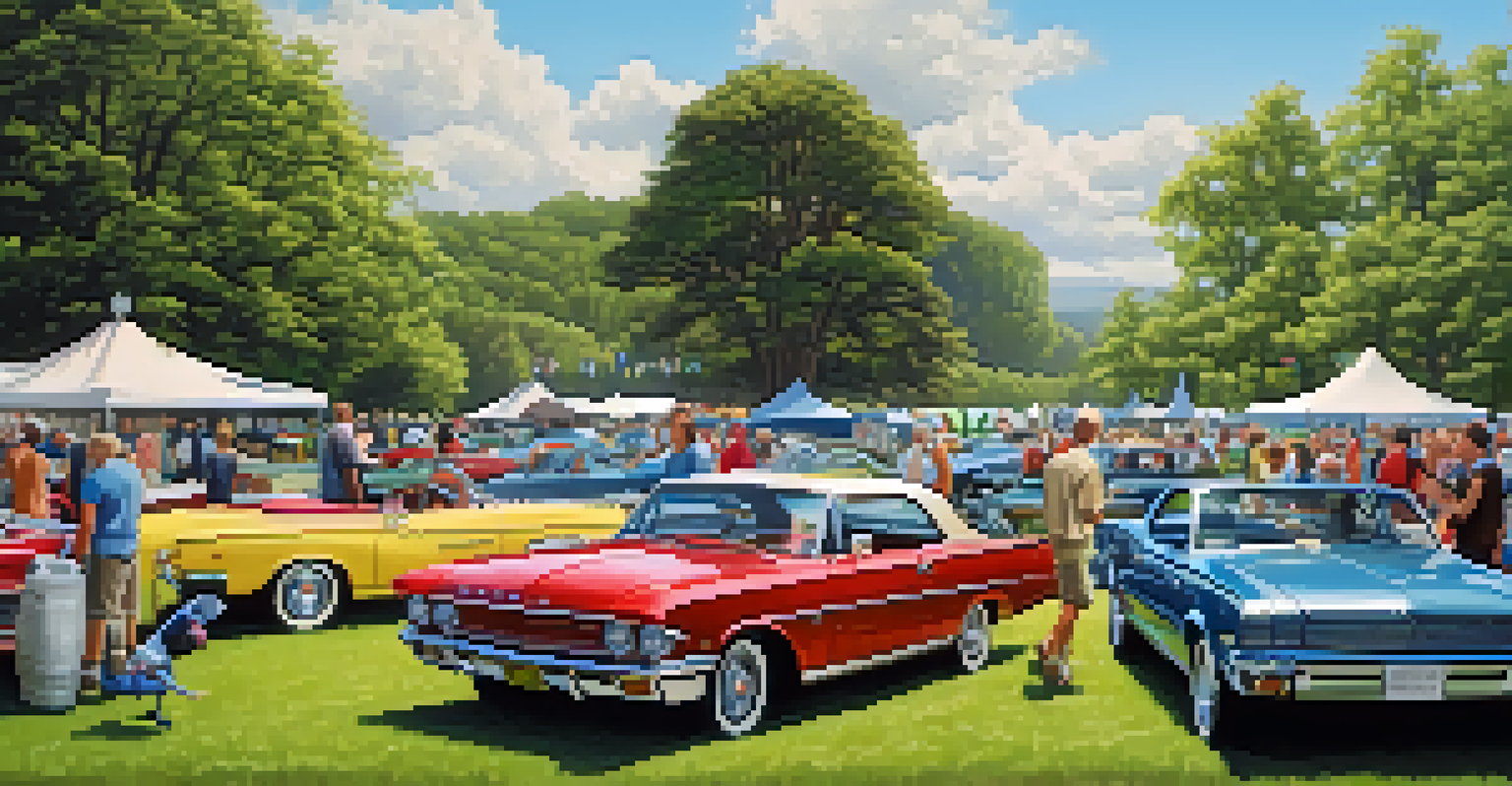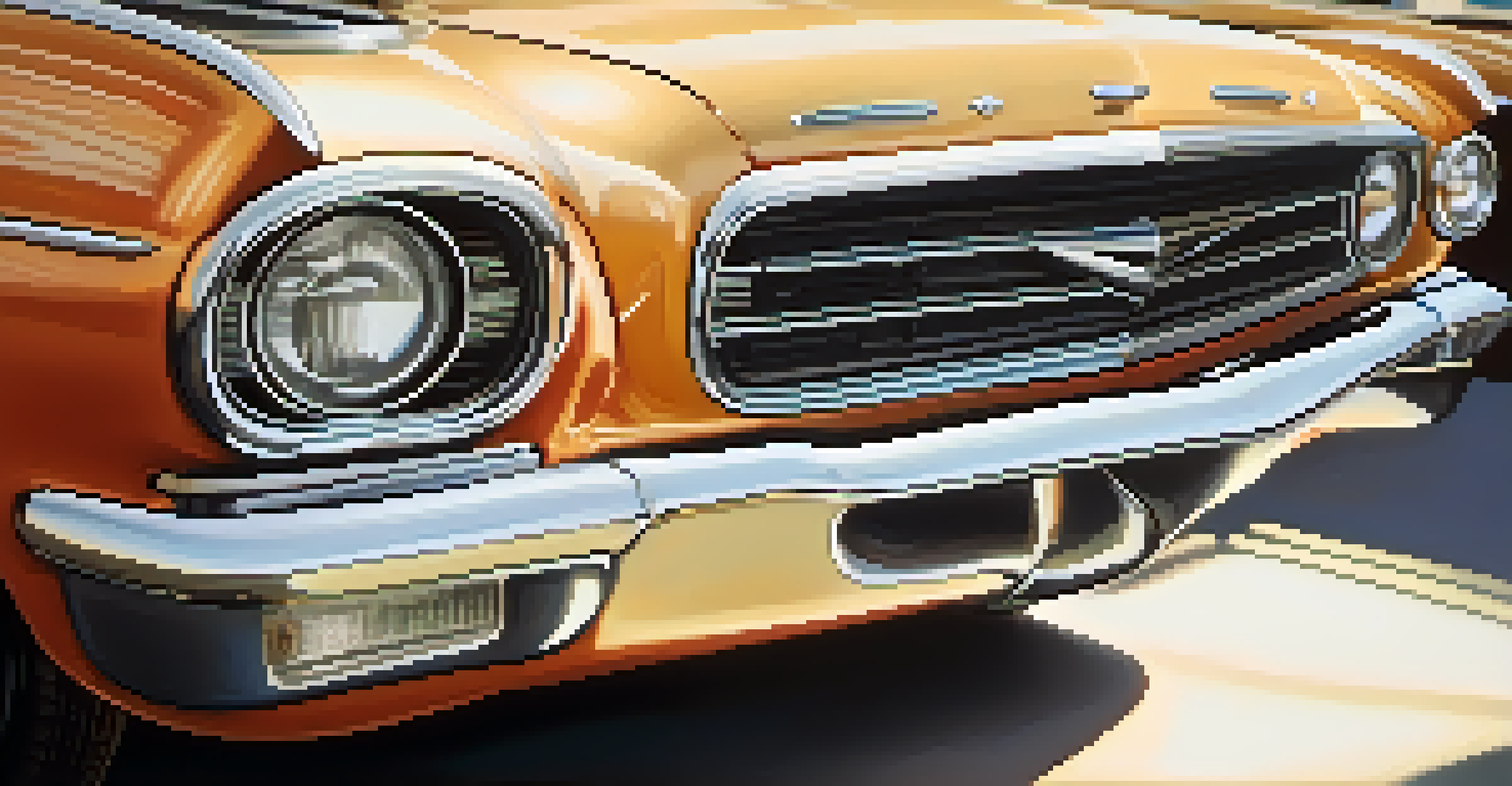Finding the Right Parts for Your Vintage Car Restoration

Understanding Your Vintage Car's Needs
Before diving into the search for parts, it's crucial to understand your vintage car's specific needs. Consider factors like the year, make, and model, as well as any modifications that may have been made over the years. This knowledge will help you identify the right parts more efficiently.
The journey of a thousand miles begins with one step.
Take the time to create a detailed list of the parts you need. This could include anything from engine components to interior fixtures. By having a clear inventory, you not only streamline your search but also avoid the frustration of purchasing duplicate parts.
Lastly, don't forget to consult your car's manual or trusted restoration resources. These documents often provide vital information about part specifications and compatibility, ensuring you make informed decisions as you embark on your restoration journey.
Utilizing Online Resources for Parts
The internet is a treasure trove for vintage car enthusiasts. Websites dedicated to classic cars often have extensive listings of parts, complete with user reviews and ratings. This can give you a clearer idea of which vendors are trustworthy and which parts are of high quality.

Online forums and social media groups are also great places to connect with fellow vintage car lovers. Many members share their own experiences and can recommend where to find specific parts. Plus, you might even find someone willing to sell or trade parts in their own collection.
Know Your Vintage Car's Needs
Understanding your vintage car's specifications and creating a detailed parts list is essential for an efficient restoration process.
Don't overlook online auction sites! These platforms can offer rare and hard-to-find parts that may not be available in conventional stores. Just remember to do your research on the seller and check for return policies to avoid surprises.
Local Junkyards and Salvage Yards: Hidden Gems
While online resources are invaluable, don’t underestimate the potential of local junkyards and salvage yards. Often, these places house vintage cars that are no longer on the road, and you might find the exact part you need at a fraction of the cost. It’s a bit like treasure hunting!
It's not about the destination, it's about the journey.
When visiting a junkyard, bring along your checklist and be prepared to spend some time searching. Each yard has its own layout and organization, so patience is key. You may even come across parts that you didn't know you needed but could enhance your car's restoration.
Remember to ask the yard owner about their policies. Some places allow you to pull parts yourself, while others may have staff assist you. Either way, always inquire about warranties or return options, just in case the part doesn't fit as expected.
Networking with Local Car Clubs and Enthusiasts
Joining local car clubs or enthusiast groups can be incredibly beneficial for your vintage car restoration. These communities are filled with passionate individuals who often have access to parts and resources that aren’t widely known. It's a great way to build relationships and share knowledge.
Attending club meetings or gatherings can also lead to discussions about sourcing parts. Many members may have spare parts for sale or know where to find what you need. Plus, their firsthand experiences can save you time and money in your search.
Leverage Online and Local Resources
Utilizing online platforms, local junkyards, and car clubs can provide valuable connections and resources for sourcing parts.
In addition to parts, these groups can also provide support and encouragement throughout your restoration journey. Sharing experiences and advice with others who share your passion can make the process much more enjoyable.
Exploring Specialty Shops for Vintage Parts
Specialty shops that focus on vintage cars can be a fantastic resource for finding quality parts. These stores often have knowledgeable staff who can guide you through the options and help you find exactly what you need. Plus, they often stock parts that are hard to find elsewhere.
When visiting a specialty shop, don’t hesitate to ask questions. The staff can provide insights about the best parts for your specific restoration project and may even have leads on where to find other components you need.
Keep in mind that while specialty shops may come with a higher price tag, the quality and authenticity of the parts can be worth the investment, especially for a classic car. It’s about finding that balance between cost and quality.
Using Reproduction Parts: Pros and Cons
Reproduction parts can be a viable option for vintage car restoration, especially when original parts are hard to find. These parts are made to mimic the original specifications, offering a cost-effective alternative. However, it's essential to research the quality of reproduction parts before purchasing.
One major advantage of reproduction parts is availability. Many manufacturers specialize in producing these components, meaning you can often find what you need without the lengthy search for originals. This can be particularly helpful for common parts that wear over time.
Document Your Restoration Journey
Keeping detailed records of your restoration process not only helps you stay organized but also adds value and authenticity to your vintage car.
However, be cautious with reproduction parts, as their durability and authenticity can vary. It’s wise to read reviews and seek recommendations from other restorers to ensure you're getting a product that meets your standards.
Documenting Your Restoration Journey
As you find the right parts for your vintage car restoration, consider documenting your journey. This can include taking photos, keeping receipts, and writing down notes about each part and its source. Not only does this help you keep track of everything, but it also creates a valuable history of your restoration.
Documentation can also be beneficial if you ever decide to sell the car in the future. Potential buyers often appreciate knowing the details about the parts used and their origins. It adds a layer of authenticity and professionalism to your restoration project.

Additionally, sharing your documentation on social media or in forums can inspire others in the vintage car community. Your journey could provide helpful insights and tips for fellow enthusiasts, creating a cycle of knowledge and support.